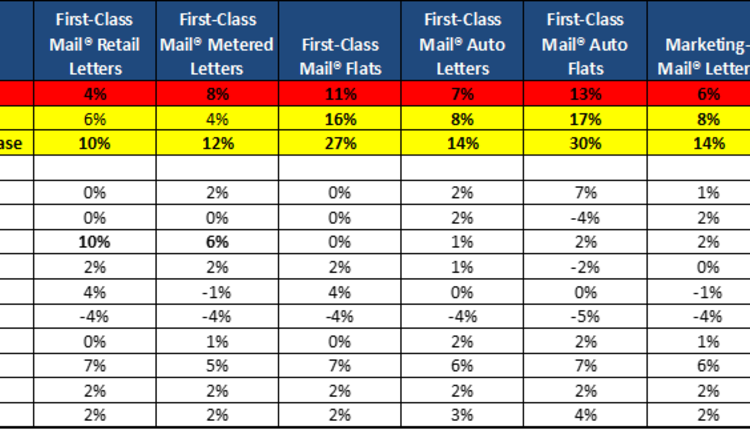Companies and their mailstream managers are at a transition point when it comes to communicating with customers. They understand the need to incorporate digital communications to meet customer demand, save money and increase efficiency. But many are stretched to keep the efficiencies of the traditional (i.e. paper) communications and provide the increasingly-preferred digital options, such as mobile payments and social media.
While the ultimate goal may be to go digital with the majority of their communications, that won't be the case for years, if not decades. The good news is that an effective transition strategy can be implemented now. It involves combining paper and digital communications in an integrated, streamlined system.
This blended approach offers a number of important benefits. Companies can segment their customers to be sure they're receiving communications through their desired channels. They can also realize significant savings - up to 50 percent in some cases - and set the stage for more digital communications in the future.
Adopting an integrated system also frees companies from the financial and logistical burdens of revamping their entire IT and communications systems. Integration, rather than a wholesale change, significantly reduces complexity. Integrated systems can be flexible, accommodating bills, statements, direct marketing, catalogs, coupons and other types of content, and can be adapted as technology changes.
The growth of digital communications is well under way -- more than 80 percent of customers at major banks including Bank of America, Chase, Citicorp and Wells Fargo, use their online banking and bill pay services, according to Javelin Strategy & Research.
But transitions are rarely smooth and almost never successfully forced on consumers, so companies need to tread lightly, particularly when it comes to customer expectations. Most of all, customers want choice and attempts to limit their options - either to paper they no longer want, or to digital that they are not yet ready to accept - can generate significant pushback. The only way to avoid the pushback is to give the customer choice and to respect her preferences. In a measure of how confusing and contradictory the landscape can be, social media has been an outlet for consumers upset that their options for paper bills had been taken away.
Clearly, any solution has to be inclusive, accelerating change but accommodating habits and preferences. Companies pursuing an integrated strategy need to take into account multiple factors. Among the top considerations are choosing the right partner if they need expertise and technical capabilities that aren't available in-house; maintaining brand integrity; and ensuring the highest levels of security.
Picking a Partner
The first step for companies is to establish which communications they want to incorporate into the integrated system first, and where and how those communications are produced. If creating, processing and distributing those communications has been outsourced, they need to work with their outsourcer (and a digital mailbox that supports outsourcers as well as direct integration) to meet the company's evolving needs for digital communications.
Further, they have to ensure that their provider's digital solutions are flexible enough to provide support for a client's particular industry. Sectors as varied as banking, insurance, cable, consumer products, financial services, governments, utilities and telecommunications are all exploring new mailstream options and each industry has its own requirements.
Partner firms must also understand and have the capacity to ensure the security and privacy of customer information.
Perhaps most importantly, a brand needs to have full confidence in its digital communications partner, whether they contract through their service bureau or they process their mail and digital communications directly. It should feel comfortable that its digital communications provider is financially strong and won't go out of business or experience other serious problems partway through a long-term project. This is a key consideration, particularly as new firms enter the industry.
An Emerging Option
Among evolving digital options, companies may want to consider a consolidated platform that has the capacity to integrate all content and communications. One company has developed an opt-in, secure, cloud-based communications platform which works independently and with established service bureaus. People access the platform using a single application and could perform a full range of integrated activities, from paying bills to accessing a central document-storage location. The system, which is called Volly, is rolling out nationally and was recently adopted by Australia Post, the Australian equivalent of the U.S. Postal Service.
Maintaining Brand Integrity
Companies are looking to use other platforms to gain access to consumers in environments they choose. For example, Facebook and social media sites create an opportunity for brands to exert themselves to consumers who are choosing to visit and interact with brands on the site. Having a company's brand live on multiple places can increase exposure and interaction but a company's reputation and brand is essential, especially the ability to guard and project that brand consistently.
While customers are on a company's website or browsing other branded properties, it's possible to control their experience. Once they leave the controlled environment, however, the brand is subject to all sorts of potential problems, from embarrassing associations generated by ad programs to direct challenges from its competitors. In one example, a person paying a credit card bill on a site not affiliated with the card company was bombarded with advertisements from the card's competitors, offering competitive interest rates and rewards programs.
The goal is to create an integrated platform and system that has safeguards in place to ensure the brand isn't sullied or diluted. It's also important to note that connecting with customers on a company's own digital platform provides excellent marketing opportunities, so the digital platform must be willing to provide the links and marketing connections back to the brand's own website in order to get that deeper interaction.
Ensuring Compliance and Security
Virtually all other types of standard business correspondence and communications are acceptable in a secure electronic delivery service. With just a handful of exceptions, secure electronic delivery services (SEDS) meet regulatory requirements: SEDS can't be used, for example, in situations involving family matters, such as divorce or adoption; housing matters such as repossession, foreclosure or eviction; or for wills and court orders, but most everything else is suitable for electronic delivery.
Of course, security is only as good as the safeguards and protections that are in place to prevent breaches or human error, among other potential problems. Companies need to fully vet any partner firm that will have access to or be responsible for protected information.
A Complex Job, a Timely Solution
Mailstream managers have more challenges - and more opportunities -- than ever before. Creating, integrating and distributing communications across multiple platforms in a fast-changing environment is a complex undertaking. By integrating digital and traditional communications in one streamlined and efficient system, managers can meet a full range of internal and external needs and effectively bridging the gap between the present and the future.
While the ultimate goal may be to go digital with the majority of their communications, that won't be the case for years, if not decades. The good news is that an effective transition strategy can be implemented now. It involves combining paper and digital communications in an integrated, streamlined system.
This blended approach offers a number of important benefits. Companies can segment their customers to be sure they're receiving communications through their desired channels. They can also realize significant savings - up to 50 percent in some cases - and set the stage for more digital communications in the future.
Adopting an integrated system also frees companies from the financial and logistical burdens of revamping their entire IT and communications systems. Integration, rather than a wholesale change, significantly reduces complexity. Integrated systems can be flexible, accommodating bills, statements, direct marketing, catalogs, coupons and other types of content, and can be adapted as technology changes.
The growth of digital communications is well under way -- more than 80 percent of customers at major banks including Bank of America, Chase, Citicorp and Wells Fargo, use their online banking and bill pay services, according to Javelin Strategy & Research.
But transitions are rarely smooth and almost never successfully forced on consumers, so companies need to tread lightly, particularly when it comes to customer expectations. Most of all, customers want choice and attempts to limit their options - either to paper they no longer want, or to digital that they are not yet ready to accept - can generate significant pushback. The only way to avoid the pushback is to give the customer choice and to respect her preferences. In a measure of how confusing and contradictory the landscape can be, social media has been an outlet for consumers upset that their options for paper bills had been taken away.
Clearly, any solution has to be inclusive, accelerating change but accommodating habits and preferences. Companies pursuing an integrated strategy need to take into account multiple factors. Among the top considerations are choosing the right partner if they need expertise and technical capabilities that aren't available in-house; maintaining brand integrity; and ensuring the highest levels of security.
Picking a Partner
The first step for companies is to establish which communications they want to incorporate into the integrated system first, and where and how those communications are produced. If creating, processing and distributing those communications has been outsourced, they need to work with their outsourcer (and a digital mailbox that supports outsourcers as well as direct integration) to meet the company's evolving needs for digital communications.
Further, they have to ensure that their provider's digital solutions are flexible enough to provide support for a client's particular industry. Sectors as varied as banking, insurance, cable, consumer products, financial services, governments, utilities and telecommunications are all exploring new mailstream options and each industry has its own requirements.
Partner firms must also understand and have the capacity to ensure the security and privacy of customer information.
Perhaps most importantly, a brand needs to have full confidence in its digital communications partner, whether they contract through their service bureau or they process their mail and digital communications directly. It should feel comfortable that its digital communications provider is financially strong and won't go out of business or experience other serious problems partway through a long-term project. This is a key consideration, particularly as new firms enter the industry.
An Emerging Option
Among evolving digital options, companies may want to consider a consolidated platform that has the capacity to integrate all content and communications. One company has developed an opt-in, secure, cloud-based communications platform which works independently and with established service bureaus. People access the platform using a single application and could perform a full range of integrated activities, from paying bills to accessing a central document-storage location. The system, which is called Volly, is rolling out nationally and was recently adopted by Australia Post, the Australian equivalent of the U.S. Postal Service.
Maintaining Brand Integrity
Companies are looking to use other platforms to gain access to consumers in environments they choose. For example, Facebook and social media sites create an opportunity for brands to exert themselves to consumers who are choosing to visit and interact with brands on the site. Having a company's brand live on multiple places can increase exposure and interaction but a company's reputation and brand is essential, especially the ability to guard and project that brand consistently.
While customers are on a company's website or browsing other branded properties, it's possible to control their experience. Once they leave the controlled environment, however, the brand is subject to all sorts of potential problems, from embarrassing associations generated by ad programs to direct challenges from its competitors. In one example, a person paying a credit card bill on a site not affiliated with the card company was bombarded with advertisements from the card's competitors, offering competitive interest rates and rewards programs.
The goal is to create an integrated platform and system that has safeguards in place to ensure the brand isn't sullied or diluted. It's also important to note that connecting with customers on a company's own digital platform provides excellent marketing opportunities, so the digital platform must be willing to provide the links and marketing connections back to the brand's own website in order to get that deeper interaction.
Ensuring Compliance and Security
Virtually all other types of standard business correspondence and communications are acceptable in a secure electronic delivery service. With just a handful of exceptions, secure electronic delivery services (SEDS) meet regulatory requirements: SEDS can't be used, for example, in situations involving family matters, such as divorce or adoption; housing matters such as repossession, foreclosure or eviction; or for wills and court orders, but most everything else is suitable for electronic delivery.
Of course, security is only as good as the safeguards and protections that are in place to prevent breaches or human error, among other potential problems. Companies need to fully vet any partner firm that will have access to or be responsible for protected information.
A Complex Job, a Timely Solution
Mailstream managers have more challenges - and more opportunities -- than ever before. Creating, integrating and distributing communications across multiple platforms in a fast-changing environment is a complex undertaking. By integrating digital and traditional communications in one streamlined and efficient system, managers can meet a full range of internal and external needs and effectively bridging the gap between the present and the future.







![GettyImages-1170541989-[Converted]](https://cms-static.wehaacdn.com/mailingsystemstechnology-com/images/GettyImages-1170541989--Converted-.1803.widea.0.jpg)



